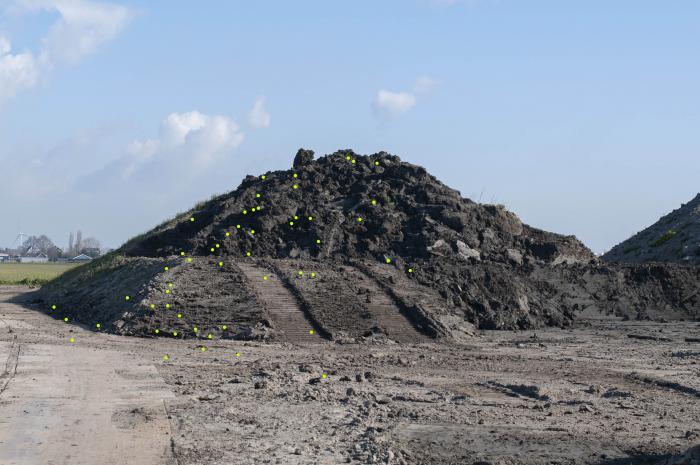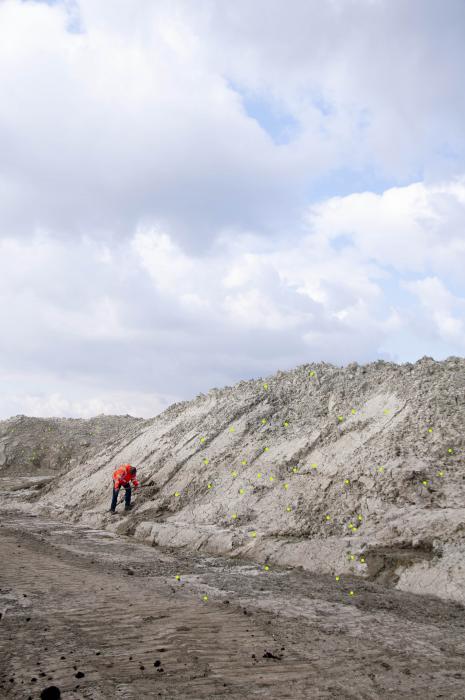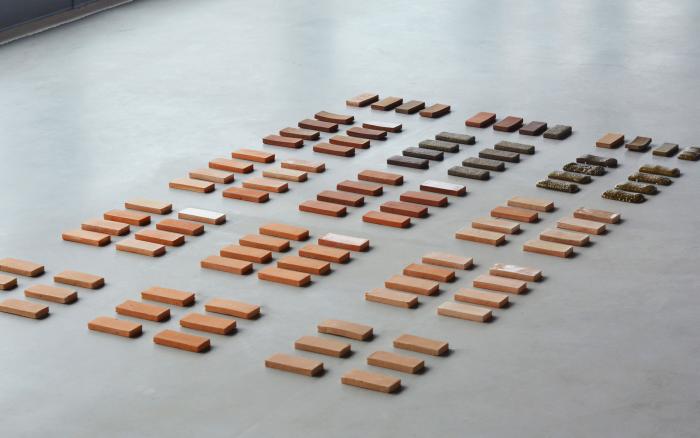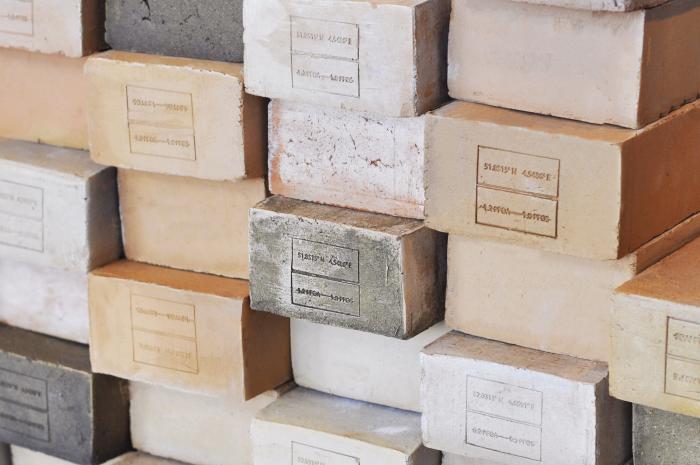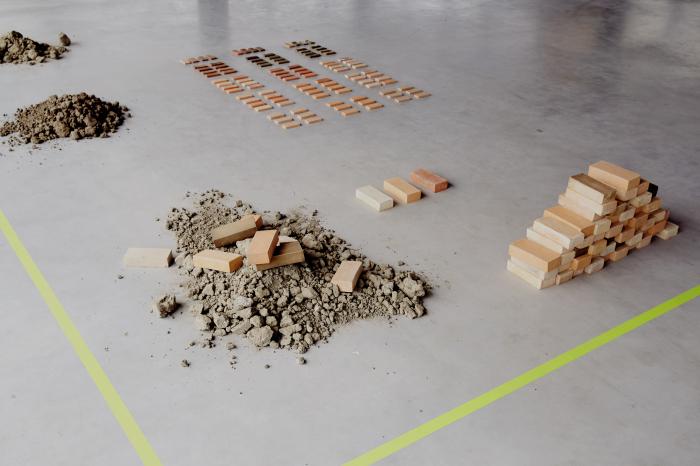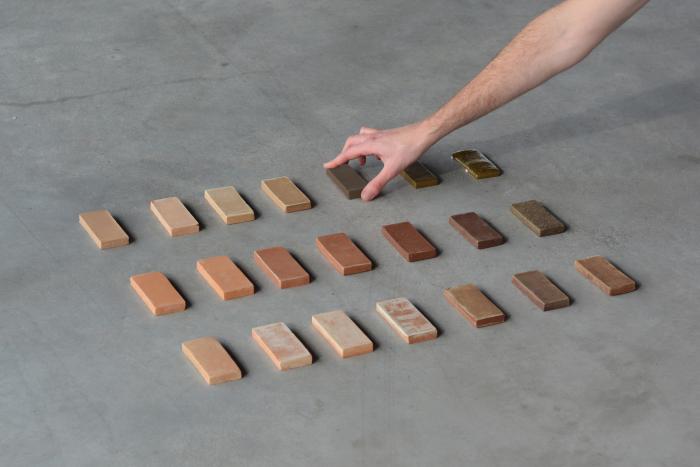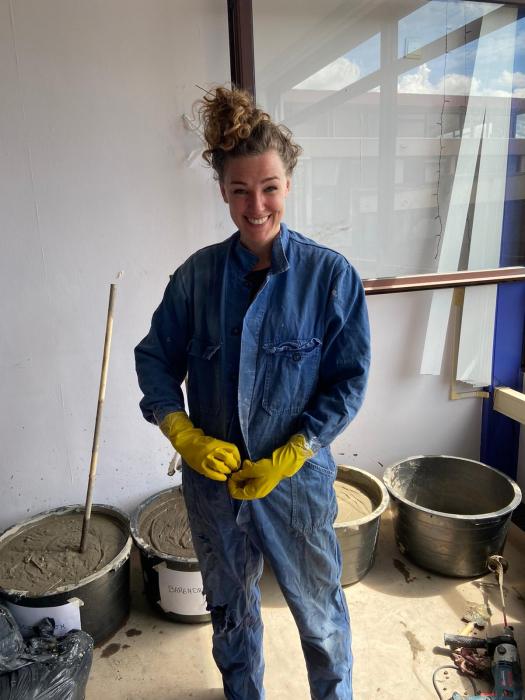I. SUMMARY INFORMATION
Project
267573
Status
Submitted
Award category
Techniques, materials and processes for construction and design
You want to submit
NEW EUROPEAN BAUHAUS RISING STARS : concepts or ideas submitted by young talents (aged 30 or less)
Project title
Packing Up PFAS
Full concept/idea title
Transforming toxic PFAS polluted claysoil into clean bricks and other ceramic materials
Description
How to sustainably remove toxic ‘forever chemicals’ from our environment? The chemical group PFAS is found all around the globe in soil, water, wildlife and people after years of industrial activity and wrongful waste-management. The project Packing Up PFAS offers a solution by transforming the PFAS polluted soil into clean bricks and other ceramic materials. All that remains of their dirty past is the stamp that states the location of origin and amount of PFAS removed.
Where is your concept/idea being developed or intended to be implemented in the EU?
Netherlands
Can be applied all over europe
Tweede Oosterparkstraat 5HS
Amsterdam
1091 HT
II. DESCRIPTION OF THE PROJECT
Please provide a summary of your concept/ idea
THE PROBLEM- PFAS is a toxic group of “forever chemicals” that have widely been used since the 1950s. Due to industrial activity and wrongful waste-management PFAS is now found all around the globe in soil, water, wildlife and people. PFAS threatens both human health and the environment. Due to bio accumulation and PFAS’ resistance to natural degradation, it is a growing problem for us and future generations.
THE SITUATION- In 2019 PFAS was put on the political agenda of the Netherlands and immediately shut down the complete building sector. PFAS was found all over the country and led to a nationwide building ban on polluted soil. Without cleaning methods available, this health crisis quickly turned into a building crisis. The most difficult type of polluted soil is clay. Due to its high density, clay holds a lot of PFAS resulting in huge mountains of toxic clay waste that ‘needs’ to be disposed.
THE SOLUTION- Packing Up PFAS offers a solution to clean up our environment and turn PFAS polluted soil into a usable product. By heating the polluted (clay)soil up to 900C the chemicals are destroyed while creating a clean ceramic material. This material can take many shapes like tableware, (roof)tiles or bricks. Especially bricks are interesting since they are produced in bulk and can be used as a local building material. As proof of concept, three polluted clay soils were successfully transformed into clean bricks and all that remains of its dirty past is the stamp that states the location of origin and amount of PFAS removed. This project shows how design has the potential to bridge between industries and to form the driving factor behind innovation in cross-pollination. By linking the building-, soil- and brick- industries under a sustainable goal, new opportunities are created for all. Currently, we are investigating possible collaborations and production possibilities.
Please give information about the key objectives of your concept/idea in terms of sustainability and how these would be met
The sustainability aim of this project is twofold: it removes the toxic chemicals from our environment and transforms PFAS polluted clay soil from waste into clean bricks.
This design makes impact on multiple levels:
✓ It offers a unique solution to remove the toxic PFAS chemicals from our soil, and therefor clean up the food chain and our environment.
✓ It gives the polluted soil a new purpose as clean bricks, so nothing goes to waste.
✓ Regular industrial bricks are created on a daily basis by applying heat to a clay body. This concept uses the same technique but breaks off PFAS in the process. Same heat, double result. Packing Up PFAS is the first project that applies heat to PFAS polluted soil and creates a useable product in exchange.
✓ The bricks can be used in the area of their origin. Building with local materials creates less CO2 emission than most imported material. In addition, it gives us grip on sustainable production possibilities like the use of kilns powered by sun or wind energy.
✓By cleaning our soil from PFAS the project creates a healthier living environment while making unusable building sites usable. This frees up the currently locked building spaces and creates cleaned living space that can be used to face the housing shortage in the Netherlands.
✓ The bricks can last for a long time and can be recycled with existing methods after their lifetime.
Please give information about the key objectives of your concept/idea in terms of aesthetics and quality of experience beyond functionality and how these would be met
The intention of Packing Up PFAS is to remove these invisible yet present toxic chemicals out of our environment by transforming the polluted soil into a tangible material. By doing so the problem gets a visible shape and solution that can reach the public. It makes the PFAS problem less abstract while showing that cleaning up our environment is the way forward.
To maximize impact, we seized the opportunity to transform the polluted soil into a mass-produced building material. Given the building ban on PFAS polluted soil all across the Netherlands, bricks became the ideal choice.
The resulting bricks show a variety of natural hues that reflect the soil they are made of. Depending on location of origin, some soils contain more iron and result in red bricks while others contain more salt and result in greenish yellow bricks. These colors are combined with a stamp stating the coordinates of origin and amount of PFAS the soil once contained. Giving the bricks a lasting reminder of their heritage.
In addition to bricks there are many other ceramic applications possible and we look forward to investigate and design these possibilities.
Please give information about the key objectives of your concept/idea in terms of inclusion and how these would be been met
Packing Up PFAS was born out of fascination and necessity to clean our environment. When PFAS was put on the political agenda in 2019, we realized how polluted the Netherlands is. PFAS is found all over the country and led to a nationwide building ban. Without cleaning methods available, the PFAS health crisis quickly turned into a building crisis. To restart the building sector the government heightened the norm value for PFAS in 2020, but this is not a durable solution to create a healthy living environment.
Packing Up PFAS is founded on the belief that everyone deserves a clean and safe environment and that it is our responsibility today to clean up for tomorrow. Packing Up PFAS urges us to clean up the chemical mess we made instead simply heightening the norm values. Instead of being just a moral call, the design offers a clean building material in return so that we can build a more sustainable future. Because we ow a healthy living environment to ourselves and future generations.
By transforming polluted clay soil into clean that can be used to build on once polluted soil, the project also helps to face the housing shortage and pushes towards the use of local materials. The aim is to make the Packing Up PFAS bricks regular market price or less, and available for everyone. Soil depots receive money from landowners and developers to store and/or process polluted soil. If we could do the same, this would translate into a reversed buy purchase price where we would receive money to take in the raw material. This would result in a very affordable building material.
Packing Up PFAS shows that design and science are strongest when combined. By cross pollination and experimentation new possibilities can be uncovered. Science leads us in the battle towards a healthy living environment and it is up to us as designers to translate all this valuable knowledge into concrete action.
Please explain the innovative character of your concept/ idea
The concept to transform PFAS polluted clay soils into clean ceramic materials is completely new and has a patent pending. The simplicity of the concept makes it beautiful and understandable as well as scalable. Worldwide the concerns about the toxic effects of PFAS are rising, resulting in more and more countries wanting to tackle the problem and more areas in need of cleaning. Already in the Netherlands, experts counted over 2000 possible PFAS hotspot locations that need further examination and possibly cleaning. On Dutch soil banks alone, there are tons of PFAS polluted clay soil waiting to be repurposed.
The concept is very scalable:
✓ All around the world PFAS is found in our environment. On Dutch soil banks alone, there are many tons of PFAS polluted clay soil waiting to be repurposed.
✓ The concern about PFAS is rising worldwide and therefor more and more countries are working on how to tackle the problem. Resulting in more areas that need to be cleaned.
✓ The concept makes use of existing infrastructures in the soil and brick industries to uniquely unite these industries under a sustainable goal.
✓ The benefit of choosing bricks as an object is that they are produced in bulk and that they are widely used as a construction material.
✓ Many other objects can be made out of the material so there are plenty more possibilities.
Please detail the plans you have for the further development, promotion and/or implementation of your concept/idea, with a particular attention to the initiatives to be taken before May 2022
The design is thoroughly rooted in literature research, experimental testing and confirmed in expert interviews. After many hours of reading PFAS literature I spoke with the PFAS Expert Team of the Netherlands who indeed confirmed that PFAS only breakdown under extreme heat and that polluted clay soil is a big problem. For this project I cooperated with a soil bank from the JbB group, who provided polluted clay soil from three locations in the Netherlands. These soils where successfully transformed into a 120 piece ceramic sample set and a collection of full size bricks. These samples and bricks show proof of concept.
Given these developments of the past year, the next steps will predominantly focus on:
Working towards load bearing bricks.
Do the necessary testing to ensure the safety of the bricks, both on the removal of PFAS and load bearing properties.
Scale up production in collaboration with a manufacturer.
Investigate possibilities to work towards a product range.
Under embargo (and therefore NOT to be communicated publicly): Currently we are investigating possibilities with Schiphol airport, an architect and brick manufacturer to do a Packing Up PFAS pilot. Schiphol is the PFAS hotspot of the Netherlands and their wish to build a fire station would make an interesting test case.
III. UPLOAD PICTURES
IV. VALIDATION
By ticking this box, you declare that all the information provided in this form is factually correct, that the proposed concept/idea has not been proposed for the New European Bauhaus Rising Stars Awards more than once in the same category.
Yes
